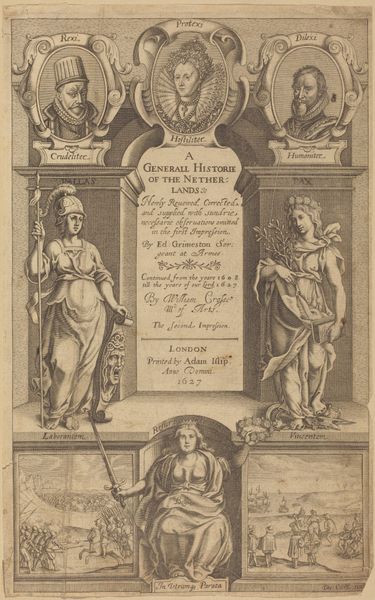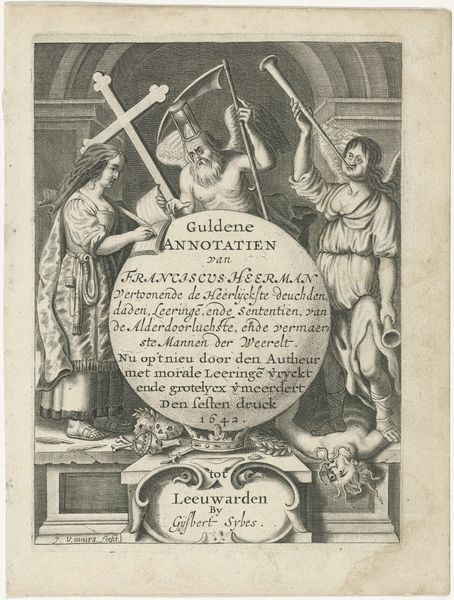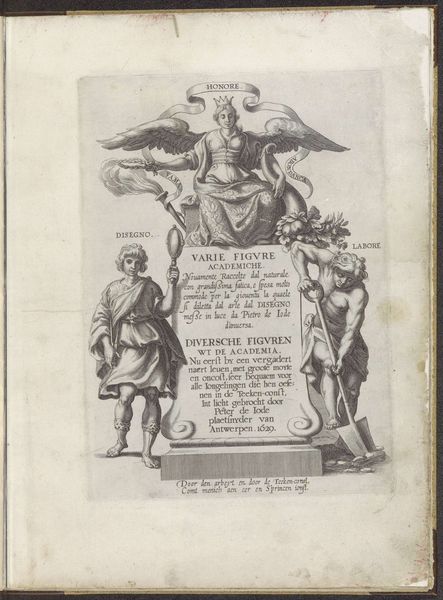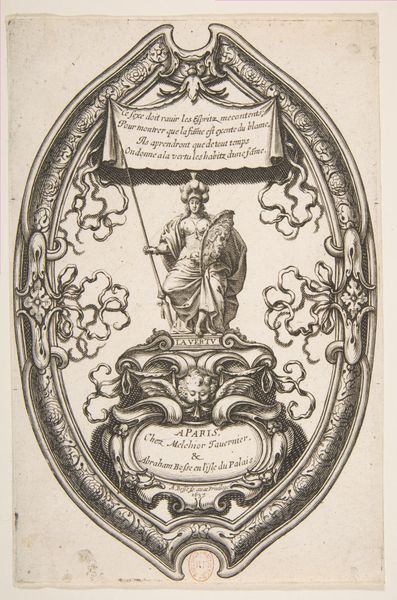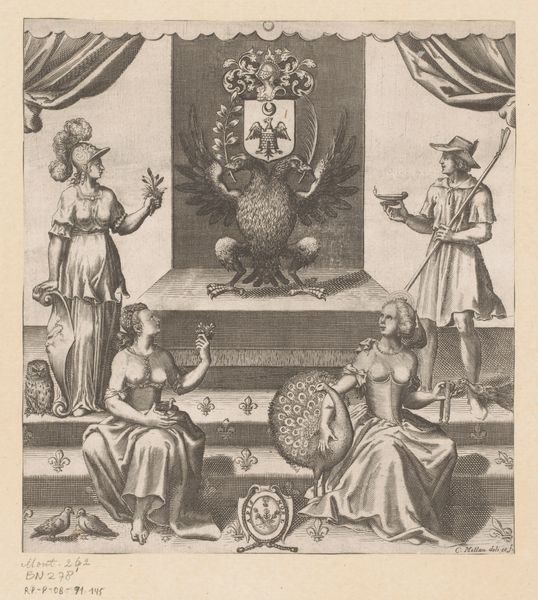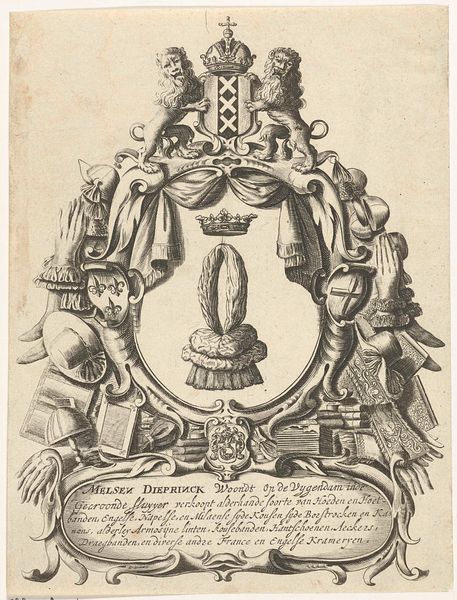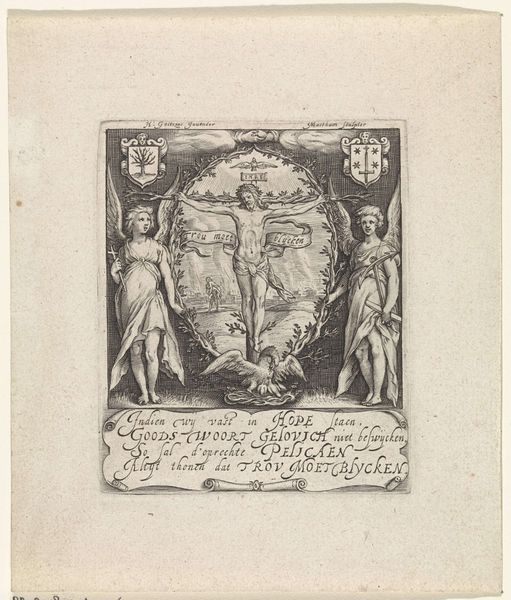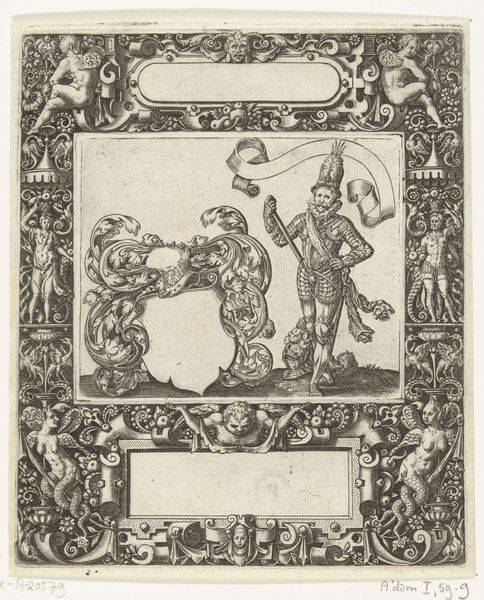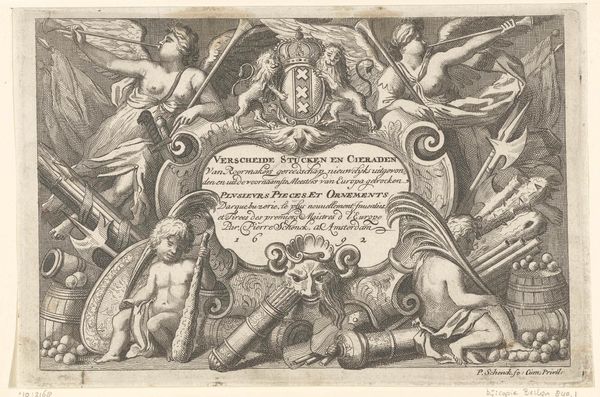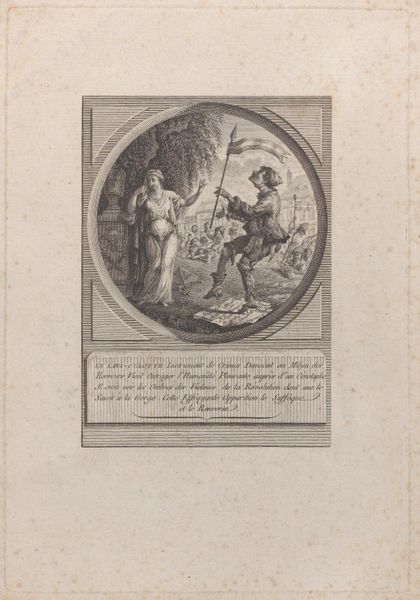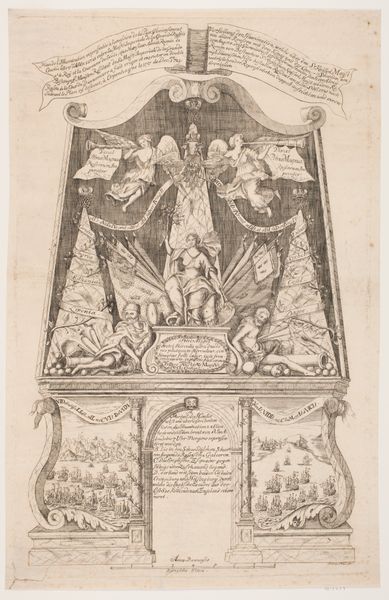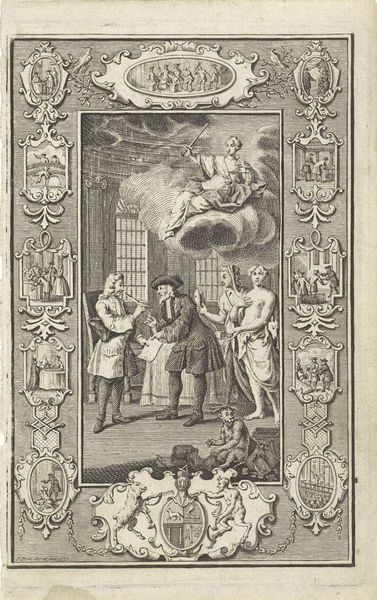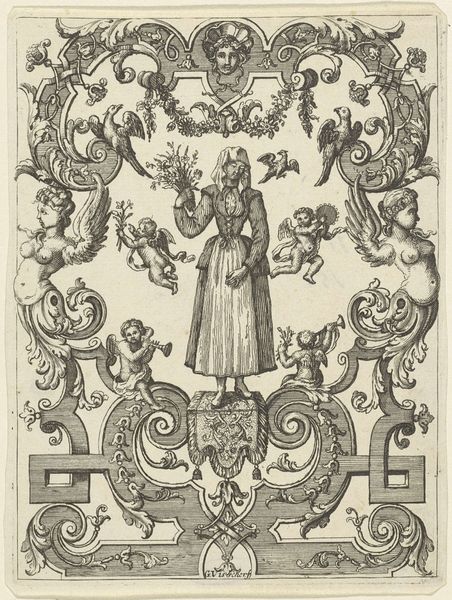
print, engraving
#
allegory
# print
#
form
#
line
#
history-painting
#
engraving
Dimensions: height 130 mm, width 84 mm
Copyright: Rijks Museum: Open Domain
Curator: Oh, yes, Langweer's "Pelikaan die zijn jongen met eigen bloed voedt" from 1661. What a potent image rendered in delicate engraving. I see an allegory so raw, so vulnerable, it practically whispers from the paper. What strikes you about it? Editor: I’m immediately drawn to the pelican at the center. It’s a striking image—noble, yet somehow tragic, with that wreath around it. The figures to each side almost seem like afterthoughts. I’m curious, what layers of meaning were engravers aiming for? Curator: Ah, that central image! For centuries, the pelican piercing its own breast to feed its young has symbolized ultimate sacrifice—selfless love and, perhaps most potently in 17th-century Europe, Christ's sacrifice. See how it nests within that garland—it elevates it to a sign. The figures represent love and knowledge as if competing as guiding spirits. Think of it as a visual sermon, each element carefully chosen to evoke specific emotions and moral contemplation. Does that framework change how you perceive the characters at all? Editor: Definitely! Seeing it in that historical context makes it so much richer. They now feel less like afterthoughts and more like dueling influences in life. Curator: Precisely! This wasn’t just decoration; it was a way to impart crucial values. It makes you wonder about the power of such images back then, doesn't it? A far cry from our fleeting digital age. Editor: It really does! Thinking about its impact then versus now is really compelling. Thank you.
Comments
No comments
Be the first to comment and join the conversation on the ultimate creative platform.
